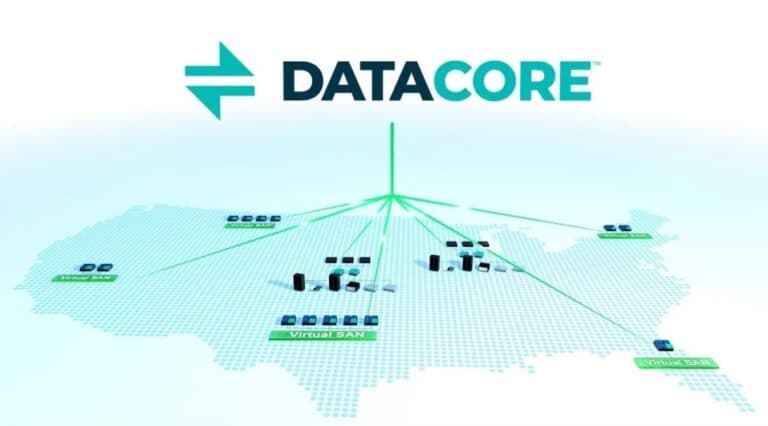A true data explosion is happening, and DataCore sees a central role for itself. The Software-Defined Storage vendor is, therefore, looking at new possibilities with its technology. How is the company positioning itself for the new data age?
According to DataCore, IT infrastructure can solve plenty of challenges in the market. One of those significant challenges comes from unstructured data. Currently, about 80 percent of data is unstructured, such as data coming from emails, text, videos, X-rays and cameras. What makes this challenge even greater, according to DataCore, is that data volume is growing significantly each month. The company expects the volume of unstructured data to triple in the next few years. Moreover, this data will reside everywhere, using a hybrid infrastructure approach, creating new challenges due to the diverse nature of this hybrid infrastructure.
In addition to this growth in data size, the different types of data, and the hybrid landscape, businesses face other challenges, according to DataCore. The data explosion increases the attack surface for hackers, allowing them to seize valuable corporate data. It is imperative to adequately protect this data so that it is not stolen and encrypted by ransomware.
Companies are also increasingly looking to analytics and insights to make decisions based on data. However, this data-driven decision-making method often requires dozens to hundreds of data sources. In the ideal scenario, these decisions are also based on up-to-date data to make decision-making as accurate and compelling as possible.
DataCore wants to respond to all these market conditions. The features and new solutions introduced by the SDS vendor are designed to address these challenges.
Innovation at the edge of the network
Innovation is reflected in DataCore’s priority for Swarm. This solution is suitable for remote IT locations with deployments of less than 100TB. DataCore is committed to further supporting these use cases by focusing on containerizing Swarm. That way, Swarm should work more smoothly at edge locations, improving the storage and processing of data at those locations. Containerizing Swarm makes it suitable for software deployments of less than 100TB at remote locations.
In addition, DataCore is now looking more at providing appliances for edge environments. This appliance should directly provide all infrastructure hardware for decision making with AI in edge environments. The product now on the market, Transporter, focuses on media and entertainment companies. It is optimized for media workflows and possibly moving content from the remote location to on-premises and cloud infrastructure. Perhaps other industry-specific solutions will be added later, as Transporter is emerging from DataCore’s Peripheral division. It explores the need for SDS solutions for industries with considerable growth potential. For DataCore, in addition to media and entertainment, these include healthcare, retail and manufacturing.
Ready for data explosion
We recently spoke with CEO Dave Zabrowski’s vision. He thinks the first DataCore product, SANsymphony, is important with the DataCore.NEXT vision, but wants the storage vendor to do more than just the core (data center). Therefore, Swarm for hybrid cloud and OpenEBS Pro (formerly Bolt) for cloud- and container-native solutions now also play a much more significant role. All to address the challenges facing enterprises and introduce innovations to address those challenges.
For example, SANsymphony will get Adaptive Data Placement next month. The feature is built to address IT teams’ storage concerns: 10 per cent of data typically drives 90 per cent of I/O activity. Moreover, that 10 per cent changes constantly, based on data access frequency needs. Preventing the remaining 90 per cent of little-used data from consuming valuable resources is too challenging, according to DataCore. IT administrators often have to choose between optimizing for performance or capacity, often at the expense of the other. Adaptive Data Placement eliminates that by combining the benefits of automated data tiering with those of inline deduplication and compression on the same storage volume, resulting in faster response times for applications accessing hot data. At the same time, the cost of storing cold data is saved.
NVMe-of in SANsymphony and OpenEBS Pro
Another significant development in the infrastructure market for DataCore is Non-Volatile Memory Express (NVMe). This technology is becoming increasingly common in SSDs. NVMe offers faster read and write speeds and better I/O performance. A few years ago, however, NVMe devices were still too expensive for widespread adoption, but today, they are more affordable, and companies are increasingly embracing them. Meanwhile, NVMe has been widely adopted in enterprise storage infrastructure. An essential extension of this is NVMe over Fabrics (NVMe-of).
DataCore has been watching this development. The SDS vendor plans NVMe-of support in all its products. SANsymphony will offer NVMe-of support next year, while OpenEBS Pro already has NVMe-of support. This order concerns the architecture of the DataCore solutions; specific updates and features are more accessible to roll out to one tool than another.
AIOps
DataCore also signals the broader development of AIOps in the storage market, which will have a greater impact on infrastructure in the long term. Traditionally, infrastructure solutions have had logging, automation and telemetry features – AIOps should be the next step. It has three core functions: predicting problems before they occur, finding the cause before it manifests itself and solving problems after they occur.
SANsymphony already has DataCore Insight Services, a cloud solution that visualizes data from the product to facilitate decision-making. SANsymphony integrates AIOps elements into one platform and adds AI, enabling a stronger form of automation. Implementation of AIOps within Swarm and SANsymphony will take place in 2024. Ultimately, DataCore’s goal is to have an integrated AIOps platform for all its customers.
Facing challenges
With all the challenges in the storage market and the solutions DataCore offers, the SDS vendor is positioning itself as a technology that helps customers scale workloads, reduce latency and optimize costs. DataCore remains committed to navigating the complex landscape of the data-centric industry. Its solutions embrace the future of Software-Defined Storage.
Tip: Storage is complex: think carefully about what you need


